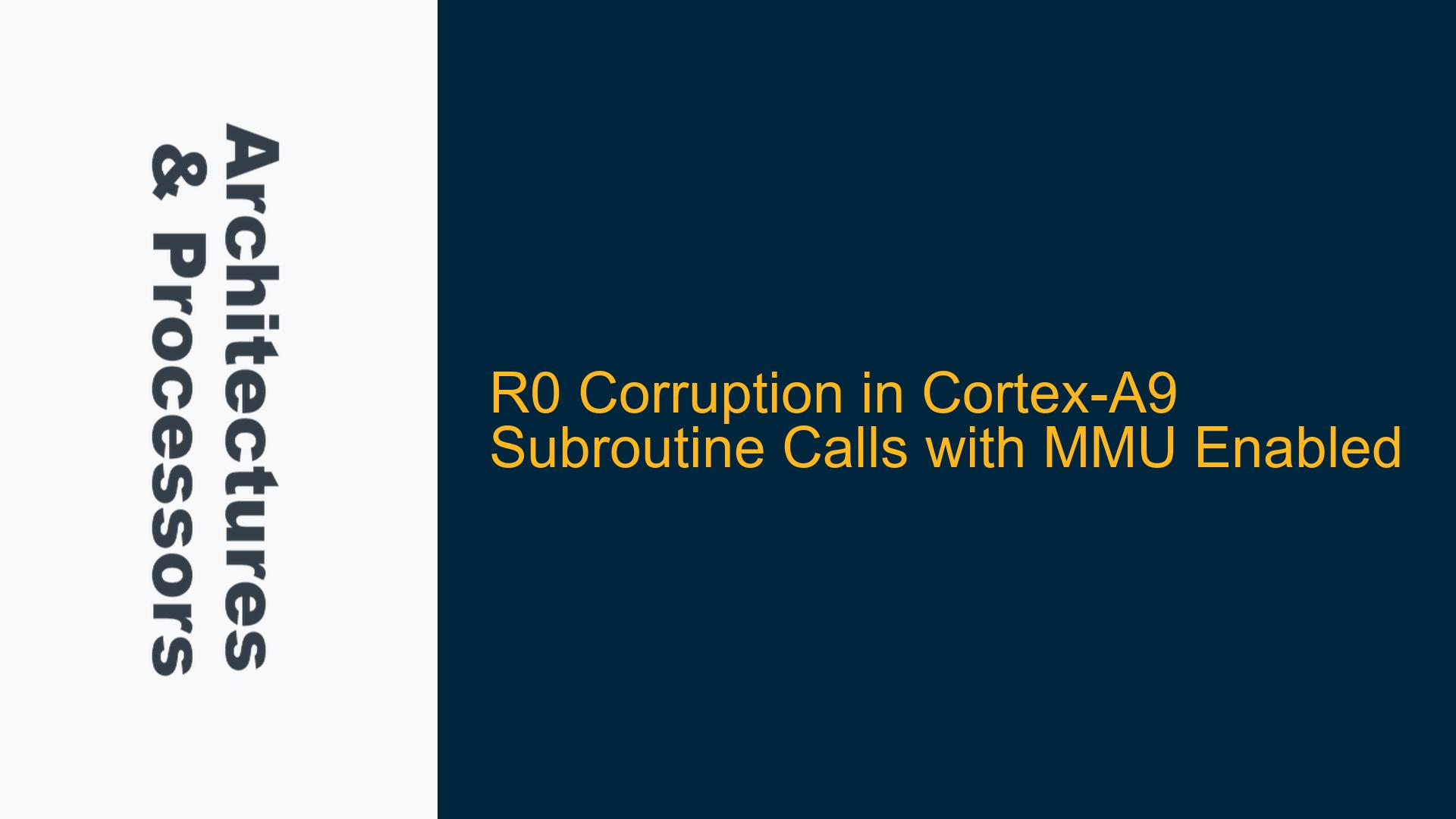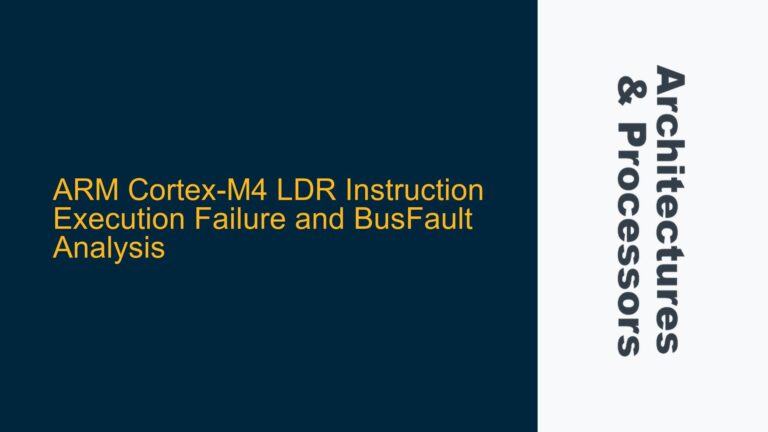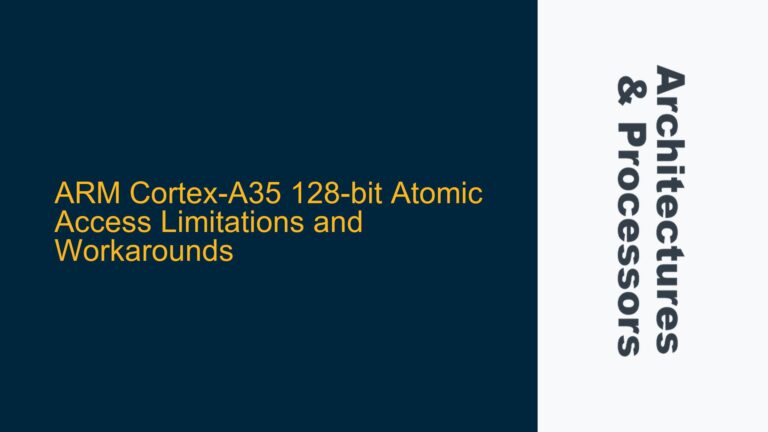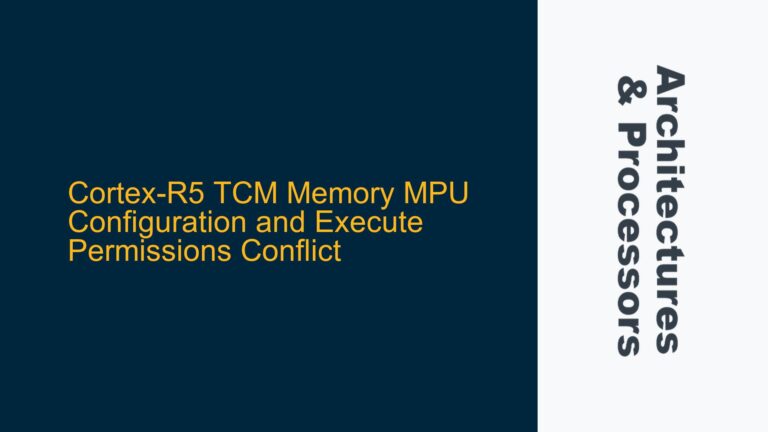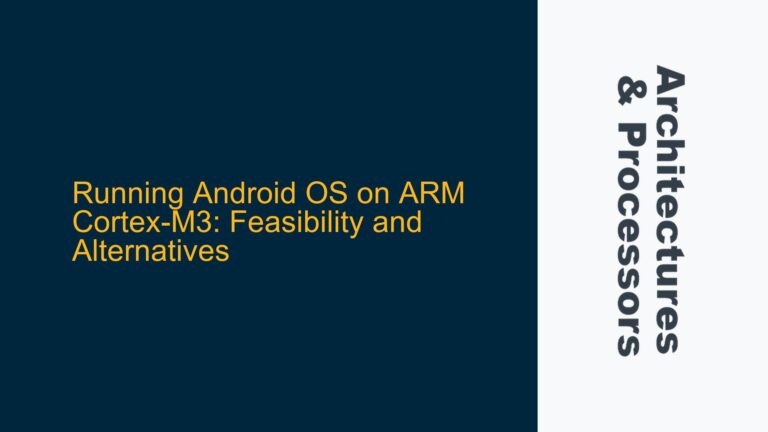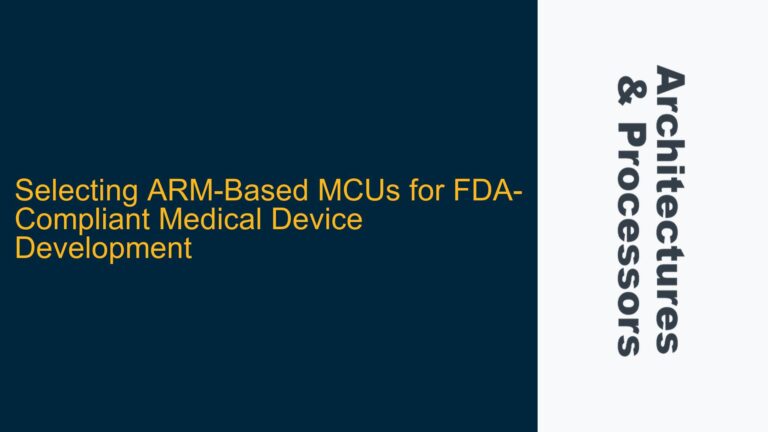ARM Cortex-A9 R0 Register Corruption During Function Calls
The issue at hand involves the corruption of the r0 register during subroutine calls on an ARM Cortex-A9 processor, specifically when the Memory Management Unit (MMU) is enabled. The problem manifests after approximately 100-200 cycles of a while loop, where a function A calls another function B with three arguments. Upon investigation, it is observed that the first argument (stored in r0) received by function B is incorrect, while the second and third arguments remain correct. The stack region from which function A loads r0 contains the correct value at the time of the exception, but the value in r0 at the entry point of function B is corrupted. Notably, this issue does not occur when the MMU is disabled.
The Cortex-A9 processor, part of the ARMv7-A architecture, is a high-performance processor commonly used in embedded systems. It features an MMU that provides virtual memory management, enabling features like memory protection, address translation, and cache control. The MMU’s involvement in this issue suggests that the problem is related to memory management, cache coherency, or address translation.
MMU Configuration and Cache Coherency Issues
The primary suspect in this scenario is the interaction between the MMU and the cache subsystem. When the MMU is enabled, it translates virtual addresses to physical addresses, and this translation process can introduce complexities in cache management. The Cortex-A9 employs a Harvard architecture with separate instruction and data caches, which can lead to cache coherency issues if not properly managed.
One possible cause of the r0 corruption is a cache coherency problem. When the MMU is enabled, the data cache might not be properly invalidated or flushed before the function call, leading to stale data being read from the cache. This could result in the r0 register being loaded with incorrect data. Additionally, the Cortex-A9’s L2 cache controller, if not properly configured, could exacerbate this issue by not ensuring coherency between the L1 and L2 caches.
Another potential cause is the improper configuration of the MMU’s translation tables. If the translation tables are not correctly set up, the MMU might translate virtual addresses to incorrect physical addresses, leading to data corruption. This could happen if the translation tables are not properly aligned or if the page table entries are incorrectly configured.
Furthermore, the Cortex-A9’s speculative execution and out-of-order execution capabilities could also contribute to the issue. If the processor speculatively executes instructions that modify the r0 register before the function call, and if the speculative execution is not properly handled, it could lead to r0 corruption. This is particularly relevant in a multi-core environment where cache coherency and memory ordering are critical.
Implementing Proper Cache Management and MMU Configuration
To address the r0 corruption issue, a systematic approach to cache management and MMU configuration is required. The following steps outline the necessary actions to diagnose and resolve the problem:
Step 1: Verify MMU Translation Tables
The first step is to ensure that the MMU’s translation tables are correctly configured. This involves verifying that the page table entries are properly aligned and that the translation tables are correctly mapped to the physical memory. The translation tables should be set up to ensure that the virtual addresses used in the code correctly map to the intended physical addresses.
To verify the translation tables, you can use the Cortex-A9’s Memory Management Unit (MMU) registers to inspect the page table entries. The Translation Table Base Register (TTBR) should point to the correct base address of the translation tables, and the page table entries should be configured with the appropriate access permissions and memory attributes.
Step 2: Ensure Cache Coherency
Cache coherency is critical when the MMU is enabled. The Cortex-A9’s data cache should be properly invalidated or flushed before the function call to ensure that the r0 register is loaded with the correct data. This can be achieved using the Data Cache Clean and Invalidate by Set/Way (DCCISW) instruction, which cleans and invalidates the data cache for a specific set/way.
Additionally, the L2 cache controller should be properly configured to ensure coherency between the L1 and L2 caches. The L2 cache controller’s registers should be mapped and configured to enable cache coherency mechanisms. This includes setting up the cacheable and bufferable bits in the MMU’s page table entries to ensure that the cache coherency protocols are correctly enforced.
Step 3: Implement Memory Barriers
Memory barriers are essential to ensure proper memory ordering in a multi-core environment. The Cortex-A9’s speculative execution and out-of-order execution capabilities can lead to memory ordering issues if not properly managed. Implementing memory barriers before and after the function call can prevent the processor from speculatively executing instructions that could modify the r0 register.
The Data Synchronization Barrier (DSB) and Instruction Synchronization Barrier (ISB) instructions can be used to enforce memory ordering. The DSB instruction ensures that all memory accesses before the barrier are completed before any memory accesses after the barrier are executed. The ISB instruction ensures that the processor flushes its pipeline and refetches instructions after the barrier, preventing speculative execution from causing issues.
Step 4: Debugging and Monitoring
To further diagnose the issue, additional debugging and monitoring techniques can be employed. One approach is to define a static variable to count the number of cycles executed before the exception occurs. This can help identify the exact point in the code where the r0 corruption happens. By monitoring the value of r0 at different points in the code, you can pinpoint the location where the corruption occurs.
Another approach is to use the Cortex-A9’s Performance Monitoring Unit (PMU) to monitor cache misses, memory accesses, and other performance metrics. The PMU can provide insights into the behavior of the cache and memory subsystem, helping to identify potential issues with cache coherency or memory access patterns.
Step 5: Review and Optimize Code
Finally, it is important to review and optimize the code to ensure that it is compatible with the Cortex-A9’s architecture. This includes ensuring that the function calls are properly aligned and that the stack is correctly managed. The code should be reviewed to ensure that there are no unintended side effects that could lead to r0 corruption.
In particular, the printk function and its associated Vsprintk function should be reviewed to ensure that they are correctly handling the format string and arguments. The buffer array should be properly allocated and managed to prevent any potential buffer overflows or memory corruption issues.
Conclusion
The r0 corruption issue on the Cortex-A9 processor when the MMU is enabled is a complex problem that requires a thorough understanding of the processor’s architecture and memory management mechanisms. By systematically verifying the MMU translation tables, ensuring cache coherency, implementing memory barriers, and employing debugging techniques, the issue can be diagnosed and resolved. Proper code review and optimization are also essential to ensure that the code is compatible with the Cortex-A9’s architecture and that no unintended side effects are introduced.
By following these steps, you can effectively troubleshoot and resolve the r0 corruption issue, ensuring reliable and stable operation of your embedded system on the Cortex-A9 processor.
